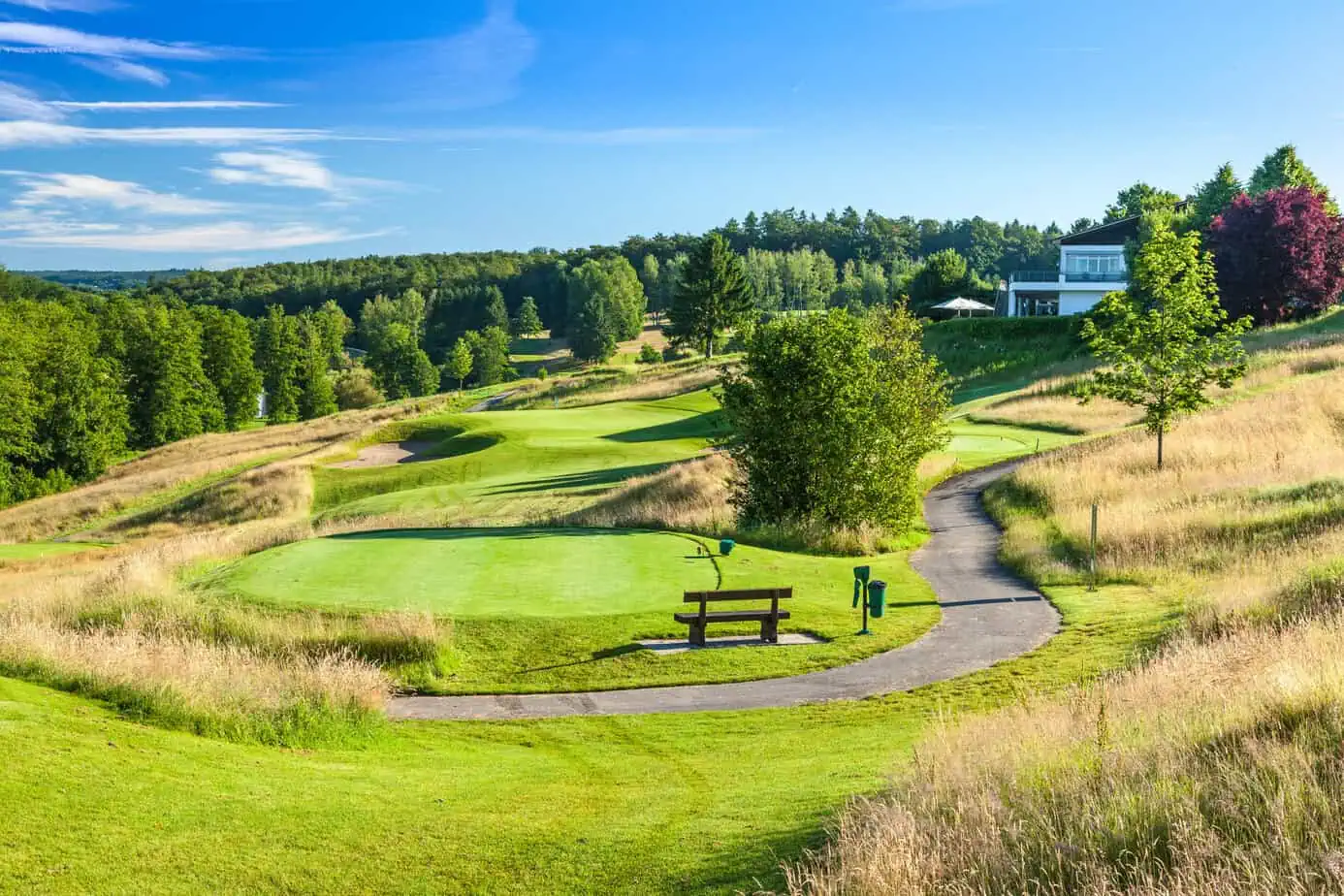Golf course design 2.0: Ready for climate change
Golf course architecture is adapting to climate change. This doesn’t make the playing experience any worse for the golfer, says Thomas Himmel, a German golf course architect. We wanted to know from him: How is the design of golf courses changing to meet the challenges of extreme weather?
The good news first: golf course architecture offers solutions to the challenges of climate change in golf. Regardless of whether it’s water shortages, extreme rainfall or storms. Admittedly, this statement may not apply to golf courses in unusual regions – whether golf courses will still be built in the Nevada desert in the future, where water costs for 18-hole courses are already often in the mid-six-figure range, remains to be seen. And even the golf course on the Florida coast is certainly no longer the first choice due to rising sea levels and increasing storms. Still, in large parts of the German-speaking world, the challenges posed by climate change can be solved if a few basic elements are considered.
The trend towards shorter courses
After golf courses have been built longer and longer over the past two decades, this trend is now gradually coming to an end. The reason: extremely long courses require a lot of resources, including water, fertilizer, sand and manpower. Sustainable management is, therefore, no longer possible for many golf courses. More finesse on the greens, interesting green surrounds and strategically well-placed individual hazards such as trees can easily provide the same or even greater challenge for the golfer but are much more resource-efficient.
Water management
The reduction of irrigated areas is just one of the solutions for intelligent water management, which is made up of several factors. After a detailed analysis of the local conditions and the expected precipitation situation in the future, supplemented by the expected stricter regulation of groundwater and a move away from the use of potable water for irrigation, water management must be set up individually for each course. Taking out mowing and sprinkling areas around tees, for example, makes for better visuals, especially in dry periods. Even in zones away from play, this achieves water savings and a reduced workload while maintaining an attractive appearance with different grasses or meadows.
Emergency storage for periods of drought
On most golf courses, it is a good idea to install temporary or emergency storage ponds in which larger quantities of water are stockpiled for periods of drought. Storage ponds of more than 100,000 m³ of water are now being built in continental Europe. These can be designed as visually less attractive technical storage facilities outside the classic play area in such a way that they have little evaporation surface due to their great depth, but on the other hand, they can also be designed as storage areas integrated into the play. In this case, networking several smaller ponds is also an option if an extremely large emergency storage facility cannot be integrated well visually and strategically.
In addition, the integration of sewage or service water is playing an increasingly important role in golf course redesign. Using service water from residential areas, recycling drainage and service water from your own golf course, and connecting to recycled water often requires a higher initial investment in technology and depends on the location of the golf course, but it provides independence in water supply. The right golf course design here ensures that drainage water, including from parking lots, and rainwater from roofs are optimally integrated.
Flood
At the same time, golf courses of the future also have a role to play in flooding concepts. Golf courses are definitely used in part as floodplains for smaller rivers and streams. As a result, however, the design of holes must be such that elevated greens and tees, proper fairway design, or inconspicuous small dams minimize damage to the golf course in the event of flooding.
Heavy rain
Especially when it comes to heavy rain and flooding, the bunker design of golf courses is becoming more and more of an issue. The design of bunkers, as well as their size and number, is particularly relevant to sustainable places. Investing in stabilization layers in the bunker to prevent gravel and sand from mixing and drainage from clogging is costly, but it facilitates playability and prevents major erosion damage, especially in areas that are increasingly affected by particularly severe storms.
Reducing the size of bunkers is also becoming an issue on more and more golf course surfaces, and here it is the role of the golf course designer to find an interesting alternative, both visually and in terms of play, for bunkers. Both are possible, however, so expensive bunker renovations are not the only way to deal with severe weather.
This means that golfers will not have to do without interesting golf courses in the future, and the same applies to golf course operators: whether for new construction, expansion or renovation – with the right concept, many of the difficulties associated with changes in the weather can be largely overcome. Good prospects for climate-resilient golf courses.









